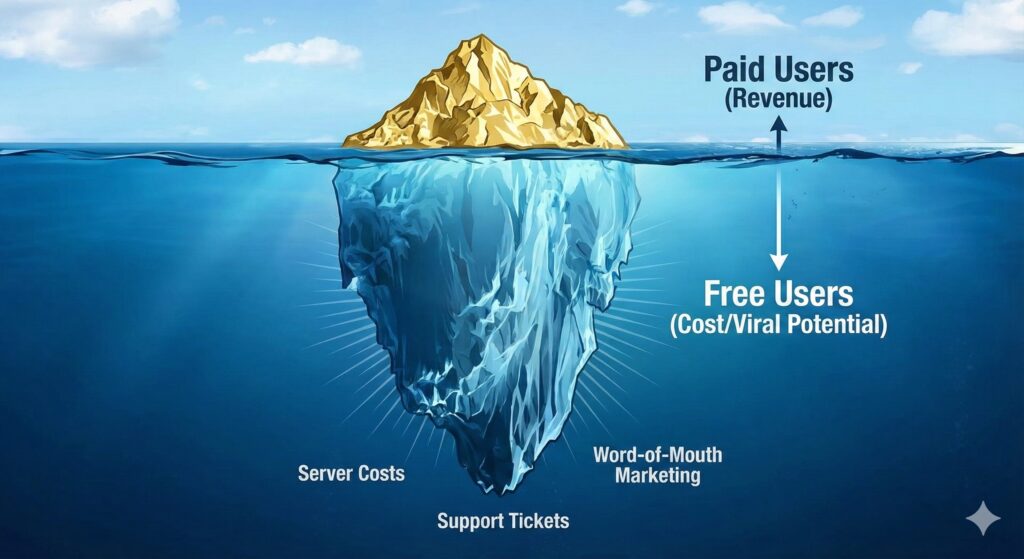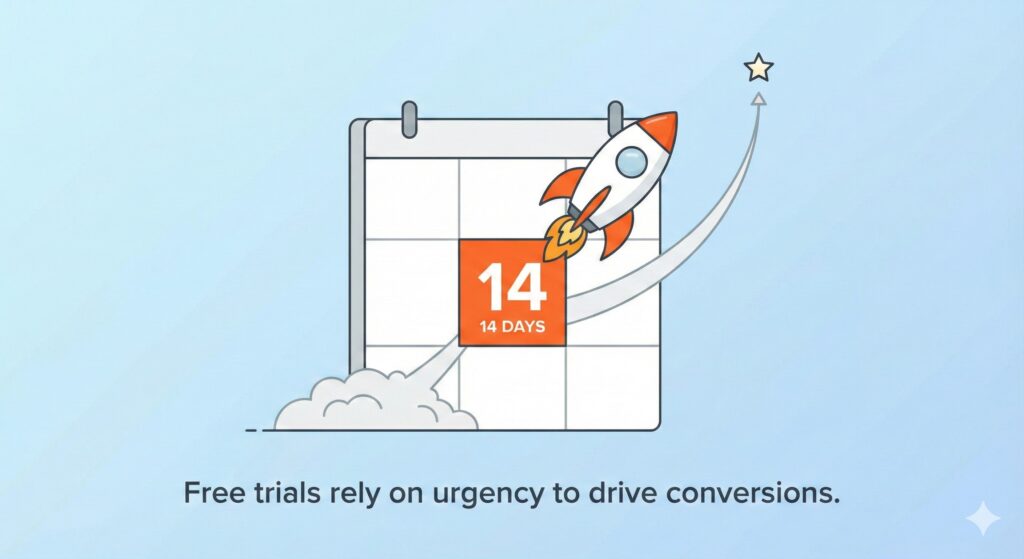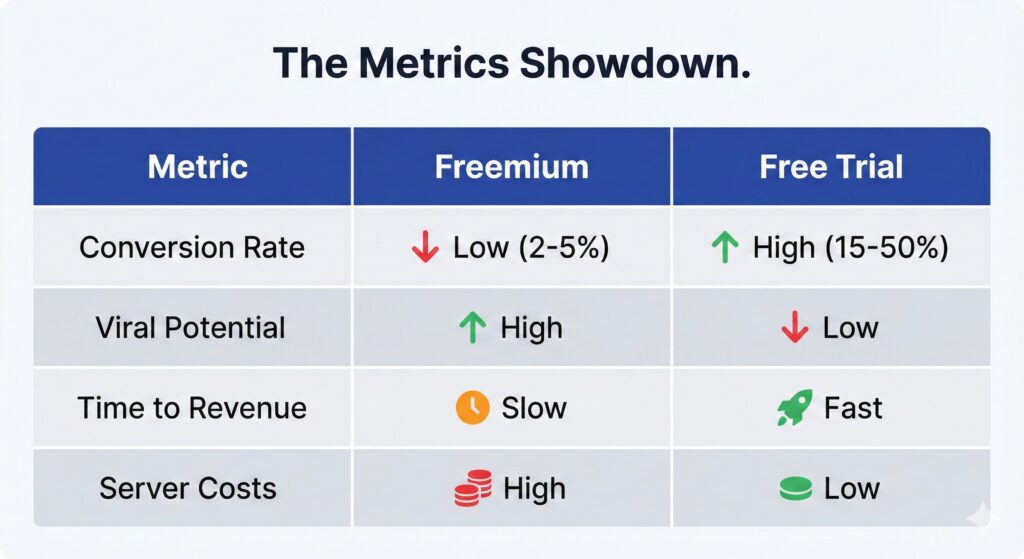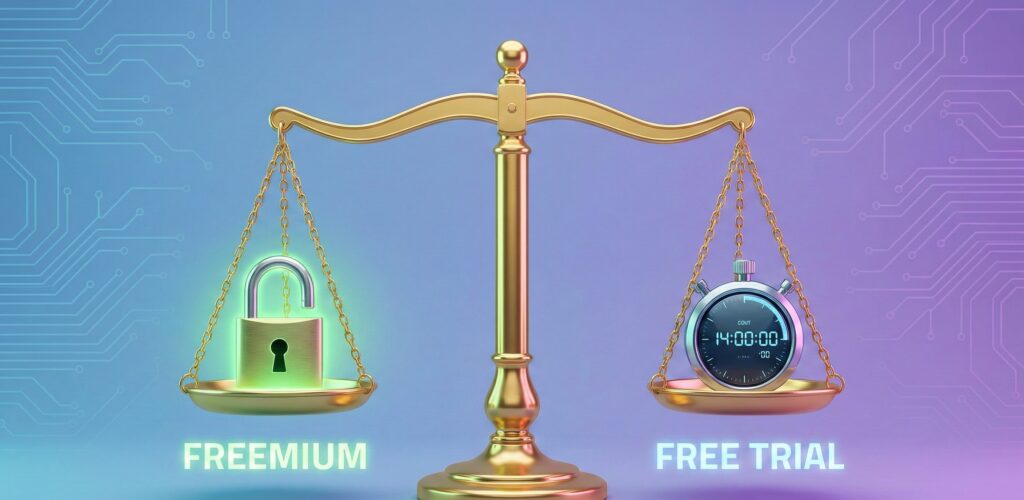Choosing a pricing strategy often feels like gambling. Do you let users through the door for free and hope they stay? Or do you put a time limit on their access to force a decision?
For SaaS founders and marketers, the battle of Freemium vs. Free Trial is the most critical decision in their Customer Acquisition Strategy. Pick the right one, and your product flies off the digital shelf. Pick the wrong one, and you could drown in support costs for users who never pay a dime.
At OfferLooters.com, we analyze hundreds of software deals every month. We’ve seen firsthand that there isn’t a “one-size-fits-all” answer. The best model depends entirely on your product’s complexity, your market size, and how quickly users reach that “Aha!” moment.
In this guide, we’ll break down the pros, cons, and 2025 performance benchmarks for both models so you can decide which one wins for your business.
What is the Freemium Model?
The Freemium Business Model is a tiered acquisition strategy where you offer a basic version of your product to users for free—forever.
It’s not just a “free sample.” It is a complete, usable product that acts as a marketing magnet. The goal is to cast a wide net, capturing thousands of users who (hopefully) get hooked on your ecosystem. Eventually, as their needs grow, they hit a “paywall” for advanced features or higher usage limits.
How It Works
Think of tools like Slack or Dropbox. You can use them indefinitely without paying. However, once you need to search old message archives or store more than 2GB of files, you are nudged to upgrade. This is often called a “feature-gated” or “capacity-gated” approach.
The Pros of Freemium
- Viral User Base Growth: Free products spread faster. If your product has “network effects” (like Zoom or Slack, where more users = more value), Freemium is a rocket booster.
- Brand Awareness: Being the “free option” makes you a default choice in search results, driving massive organic traffic.
- Nurturing Long-Term Leads: Some users aren’t ready to buy today. Freemium keeps them in your ecosystem until they are ready, rather than losing them to a competitor.
The Cons of Freemium
- The “Penny-Pincher” Problem: You attract a lot of users who will never pay.
- High Support Costs: Free users still submit support tickets, use server bandwidth, and require maintenance. If your Customer Acquisition Cost (CAC) for free users exceeds the revenue from paid users, you will burn cash.
- Revenue Lag: It can take months or years for a free user to convert into a paid customer.

What is the Free Trial Model?
The Free Trial model is the “try before you buy” approach. Unlike Freemium, this access is not indefinite. It is a time-limited test drive—typically 7, 14, or 30 days—designed to create urgency.
Once the clock runs out, the user has a binary choice: Pay up or get locked out.
Types of Free Trials
- Opt-In (No Credit Card Required): Low friction. Users just need an email to start. This maximizes sign-ups but may lead to lower conversion rates later.
- Opt-Out (Credit Card Required): High friction. Users must enter payment details to start the trial. This filters for high-intent buyers and often results in higher retention.
The Pros of Free Trials
- Urgency Drives Action: The “ticking clock” forces users to evaluate your software seriously.
- Higher Conversion Rates: Because users know the trial will end, they are mentally prepared to buy.
- Revenue Protection: You don’t carry “dead weight” users who cost money but never pay.
The Cons of Free Trials
- Higher Barrier to Entry: Asking users to commit (even to a trial) creates friction. You will get fewer sign-ups compared to a Freemium model.
- The “One Shot” Risk: You have a very short window (e.g., 14 days) to prove your value. If the user doesn’t find the “Aha!” moment quickly, they are gone forever.

Freemium vs Free Trial: The Head-to-Head Comparison
Which model actually brings in the money? Let’s look at the data. Benchmarks for 2025 show a clear divide in how these models perform across key SaaS metrics.
1. Conversion Rates
- Freemium: The industry average conversion rate from Free to Paid is typically low, hovering around 2-5%. If you have 100 free users, expect only 2 to upgrade.
- Free Trial: Conversion rates are significantly higher.
- Opt-In Trials: ~15-25% conversion.
- Opt-Out Trials: ~40-60% conversion (though with fewer initial sign-ups).
Winner: Free Trial wins on pure conversion percentage.
2. Customer Acquisition Cost (CAC)
Freemium can deceptively inflate your CAC. You aren’t just paying to acquire the paid customer; you are paying to support the 98 free users for every 2 that pay. However, if your free users act as a marketing team (word-of-mouth), they can lower your overall marketing spend.
Winner: Tie (Depends on your viral coefficient).
3. Retention & Churn
Free Trial users who convert are often more “qualified.” They have tested the full product and made a conscious decision to pay. Freemium users who upgrade may churn quickly if they realize the “Pro” features aren’t as necessary as they thought.
Winner: Free Trial generally offers better initial retention.

The Hybrid Model: Best of Both Worlds?
Why choose one when you can have both?
In 2025, the smartest SaaS companies are moving toward a Hybrid Model (often called the “Reverse Trial”).
Here is how it works:
- A user signs up and is immediately placed into a Free Trial of the Premium Plan (e.g., 14 days of full access).
- If they don’t pay by the end of the 14 days, they aren’t locked out. Instead, they are downgraded to the Freemium version.
Canva and Notion are masters of this. It captures the urgency of a trial and the retention safety net of Freemium.
At OfferLooters, we often see software developers using this strategy to maximize their deal value. It ensures that no lead is ever truly “lost”—they just move to a different tier.
How to Decide: Which Model Fits Your Business?
Still unsure? Use this simple decision framework.
Choose Freemium If:
- Your Market is Massive: You need millions of users to make the math work (e.g., B2C apps, productivity tools).
- Your Product is Simple: Users can figure it out without help.
- You Have Low Operating Costs: Serving a free user costs you pennies (e.g., simple data storage or text processing).
- You Rely on Network Effects: The product gets better when more people use it (e.g., social platforms, collaboration tools).
Choose Free Trial If:
- Your Market is Niche: You are selling B2B software to a specific industry.
- Your Product is Complex: Users need to see the full power of the tool to understand the value.
- Your Costs are High: Each user costs you significant money in server space or support (e.g., AI video generation).
- You Need Immediate Cash Flow: You can’t afford to wait 6 months for a user to upgrade.
Conclusion
There is no “bad” choice between Freemium and Free Trial—only the choice that aligns with your current business goals.
If you want to dominate market share and become a household name, Freemium is your weapon. If you want to validate your product quickly and generate revenue to survive, Free Trial is your shield.
However, there is a third option for savvy users who want to skip the monthly subscriptions entirely: Lifetime Deals.
At OfferLooters.com, we curate the best software deals on the web. Whether you are a founder looking to see how competitors structure their pricing, or a user looking for tools that don’t drain your bank account every month, OfferLooters is your go-to resource.
Don’t just rent your software—Loot it.
Frequently Asked Questions (FAQ)
Q1: Can I switch from Freemium to Free Trial later?
Yes, but it’s risky. Taking away a “forever free” plan can upset your existing user base and cause backlash. If you switch, it’s best to grandfather in existing users or offer a generous “Reverse Trial” hybrid model to smooth the transition.
Q2: Which model is better for SEO?
Generally, Freemium wins for SEO. Free tools generate a high volume of search traffic (e.g., “free PDF editor”) and attract backlinks from blogs and resource lists. Free Trials rarely generate the same level of organic buzz.
Q3: How long should a free trial be?
The standard used to be 30 days, but in 2025, 14 days is the sweet spot for most B2B SaaS. It provides enough time to explore but keeps the urgency high. For very complex enterprise software, a longer trial or a guided demo is often required.
Q4: Should I require a credit card for my free trial?
If you are drowning in low-quality leads and support tickets, require the card (Opt-Out). It filters out the “tire kickers.” If you are a new startup desperate for anyone to try your product, don’t require the card (Opt-In) to maximize sign-ups.
Q5: Where can I find examples of software using these models?
You can browse active software deals on OfferLooters.com. Checking out live deals is the best way to see how successful companies are currently structuring their pricing tiers, trial periods, and feature gates.
